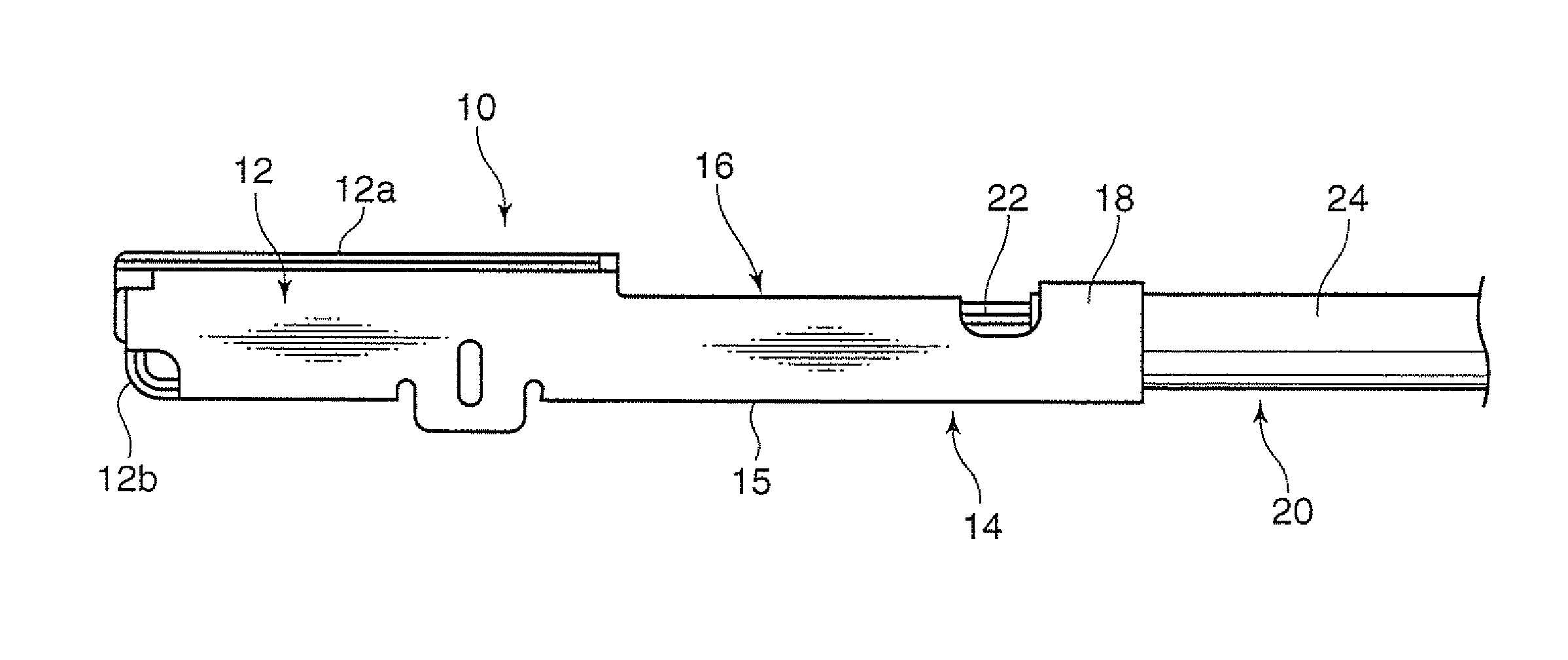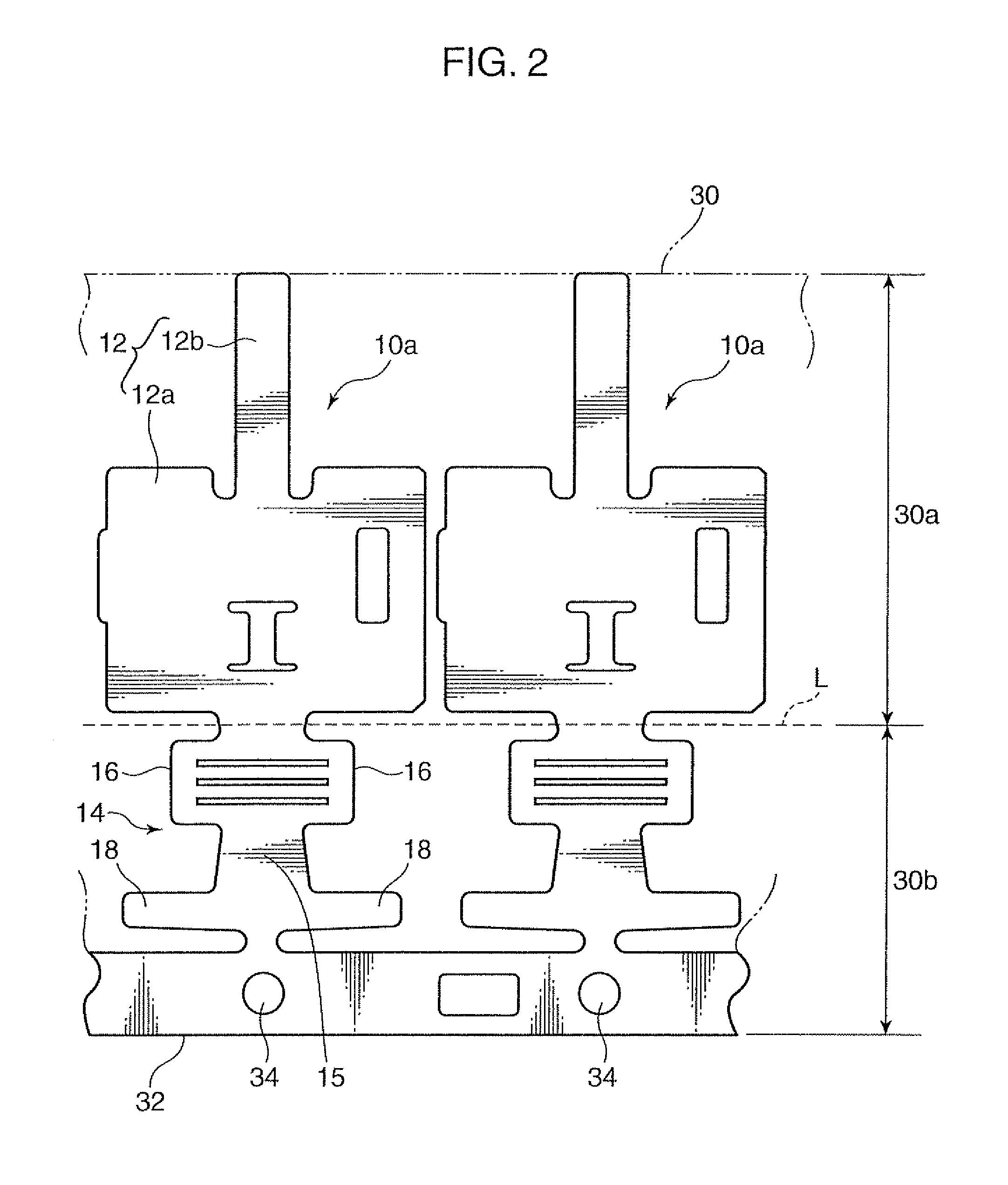Crimp terminal, terminal-equipped electric wire with the crimp terminal, and methods for producing them
a technology of crimp terminal and electric wire, which is applied in the direction of line/current collector details, contact member coupling, and connection effected by permanent deformation, etc. it can solve the problems of easy breakage of tin oxide film and little effect on contact resistance, so as to reduce contact resistance and allow contact resistance to be maintained , good adhesion
- Summary
- Abstract
- Description
- Claims
- Application Information
AI Technical Summary
Benefits of technology
Problems solved by technology
Method used
Image
Examples
examples
[0053]As for an inventive example and a comparative example, there was carried out a test for measuring a fixed strength and a contact resistance. The comparative example provides a crimp terminal, which has a structure equivalent to that of the crimp terminal 10 shown in FIG. 1, formed of a metal plate constituted by a plate body made of brass and a tin-plating layer laminated on the surface of the plate body with a thickness of 0.8 to 1.5 μm. Differently, the inventive example provides a crimp terminal where the thickness of the tin-plating layer in the crimp surface region was reduced to about 0.3 μm by a local heat treatment at 150° C.
[0054]FIGS. 7 and 8 show respective measurement results of the comparative example and the inventive example. These show respective graphs, each of which includes a horizontal axis representing a clamp height (crimp height) of the conductor barrels, and vertical axes indicate a fixed strength (which is a force by which the conductor barrels are fix...
PUM
| Property | Measurement | Unit |
|---|---|---|
| thickness | aaaaa | aaaaa |
| thickness | aaaaa | aaaaa |
| thickness | aaaaa | aaaaa |
Abstract
Description
Claims
Application Information
 Login to View More
Login to View More - R&D
- Intellectual Property
- Life Sciences
- Materials
- Tech Scout
- Unparalleled Data Quality
- Higher Quality Content
- 60% Fewer Hallucinations
Browse by: Latest US Patents, China's latest patents, Technical Efficacy Thesaurus, Application Domain, Technology Topic, Popular Technical Reports.
© 2025 PatSnap. All rights reserved.Legal|Privacy policy|Modern Slavery Act Transparency Statement|Sitemap|About US| Contact US: help@patsnap.com



